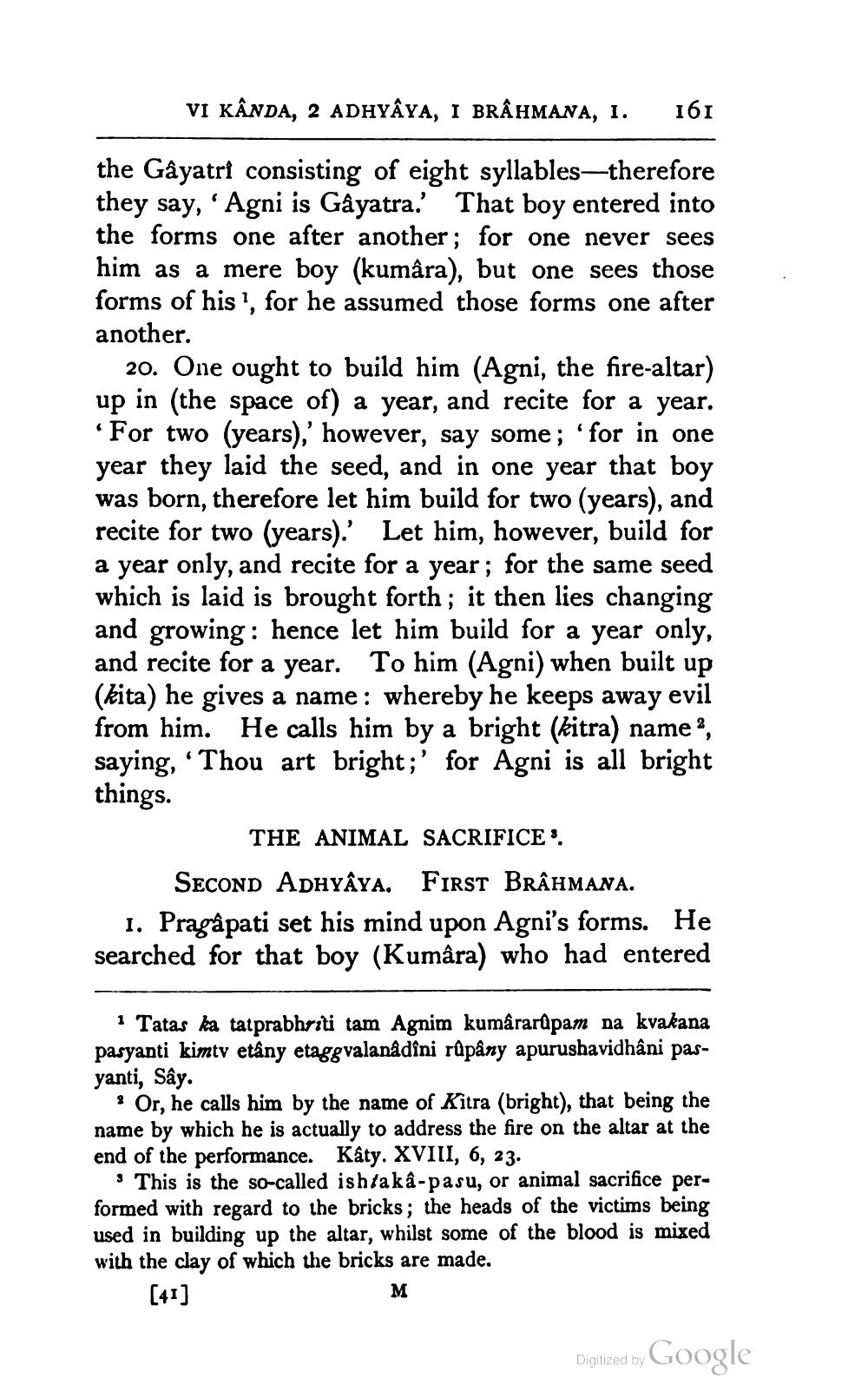________________
VI KÂNDA, 2 ADHYAYA, I BRÂHMANA, 1.
161
the Gâyatri consisting of eight syllables—therefore they say, ' Agni is Gâyatra.' That boy entered into the forms one after another; for one never sees him as a mere boy (kumâra), but one sees those forms of his ', for he assumed those forms one after another.
20. One ought to build him (Agni, the fire-altar) up in (the space of) a year, and recite for a year. *For two (years), however, say some; 'for in one year they laid the seed, and in one year that boy was born, therefore let him build for two (years), and recite for two (years). Let him, however, build for a year only, and recite for a year; for the same seed which is laid is brought forth; it then lies changing and growing: hence let him build for a year only, and recite for a year. To him (Agni) when built up (kita) he gives a name: whereby he keeps away evil from him. He calls him by a bright (kitra) name , saying, 'Thou art bright;' for Agni is all bright things.
THE ANIMAL SACRIFICE SECOND ADHYÂYA. First BRÂHMANA. 1. Pragâpati set his mind upon Agni's forms. He searched for that boy (Kumâra) who had entered
1 Tatas ka tatprabhriti tam Agnim kumârarūpam na kvakana pasyanti kimtv etâny etaggvalanâdîni rupany apurushavidhâni pasyanti, Sây.
? Or, he calls him by the name of Kitra (bright), that being the name by which he is actually to address the fire on the altar at the end of the performance. Káty. XVIII, 6, 23.
9 This is the so-called is h/aka-pasu, or animal sacrifice performed with regard to the bricks; the heads of the victims being used in building up the altar, whilst some of the blood is mixed with the clay of which the bricks are made.
M
Digitized by Google




